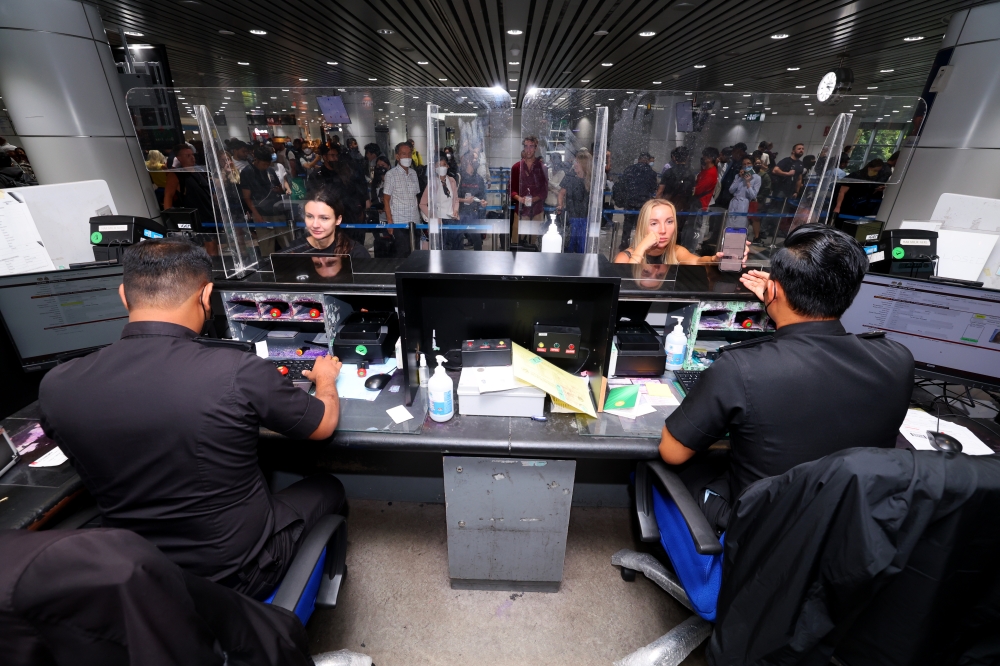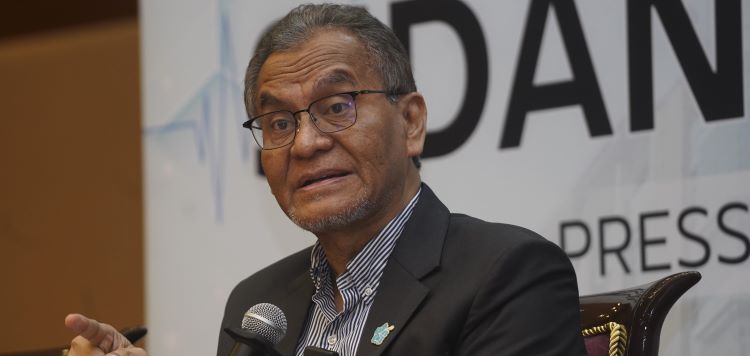JULY 28 — The recent detention of an enforcement officer at Kuala Lumpur International Airport (KLIA) Terminal 1 has renewed public scrutiny over a clandestine practice known as “counter setting”. This tactic, where individuals are allowed to bypass formal immigration procedures, raises serious concerns not only regarding border security and official corruption but also about structural vulnerabilities in Malaysia’s migration management, labour demands, and institutional accountability.
Last November, nearly 50 immigration officers were reassigned following investigations by the Malaysian Anti-Corruption Commission (MACC) into a similar syndicate operating at KLIA. A senior immigration officer, believed to be the mastermind behind the network, is expected to face charges over a human trafficking ring that allegedly facilitated the unlawful entry of foreign nationals without immigration clearance.
The act of “counter-setting” which involves corruption at borders is a well-recognised enabler of both human trafficking and migrant smuggling. The United Nations Office on Drugs and Crime (UNODC) identifies bribery and abuse of power as systemic “pull factors” that facilitate transnational crime. In this context, “counter setting” is not just negligence, it is an institutional gateway for illicit entry under the guise of administrative authority. However, criminalising rogue officers should not automatically lead to the assumption that all individuals who passed through these compromised checkpoints are victims of trafficking or knowingly complicit in smuggling.

Immigration Department officers inspecting passports of foreign visitors at Kuala Lumpur International Airport (KLIA) in this file photo taken on July 3, 2023. — Bernama pic
Trafficking vs. smuggling: Distinct legal frameworks
Public discourse frequently conflates “migration”, “trafficking”, and “smuggling”, an issue compounded by certain NGO and academic narratives that generalise irregular movement as either criminal or victimhood, obscuring nuanced legal distinctions. Under both the UN Trafficking Protocol (Palermo Protocol) and Malaysia’s Anti-Trafficking in Persons and Anti-Smuggling of Migrants Act 2007 (ATIPSOM), human trafficking consists of three essential elements: act (e.g., recruitment, transportation), means (e.g., coercion, fraud, abuse of power), and purpose (e.g., exploitation such as forced labour or sexual servitude).
However, ATIPSOM does not clearly criminalise attempts to traffic nor does it automatically recognise someone as a trafficked person simply because they entered the country irregularly. As studies has established, most trafficking victims enter Malaysia legally which means that they are in possession of valid passport and are even given a 30-day visa free entry if they are from South-east Asian countries. Therefore, it is nearly impossible to establish the key component of “exploitation” unless it is evidently demonstrated at the border entry. Mere facilitation without evidence of exploitation does not constitute trafficking.
By contrast, migrant smuggling involves consensual facilitation of unlawful entry in exchange for financial gain. Once the border is crossed, the smuggling transaction ends. In such cases, the migrant is typically treated as an offender who have breached immigration laws. An individual’s status only becomes “irregular” if immigration officers on arrival fail to stamp or process their entry. This administrative omission does not by itself amount to criminal conduct or evidence of trafficking.
This brings us to a critical question: how can authorities establish that the individuals who entered via “counter setting” were trafficked, smuggled, or simply irregular migrants? Without evidence of coercion or exploitation, these individuals remain at best suspects or irregular entrants.
As many of us has experienced, it is extremely difficult for individuals to board international flights to Malaysia without valid travel documents. Multiple layers of checks include immigration clearance at the point of departure, airline document verification, and pre-boarding checks by flight crew. This may not necessarily be the case when entering Malaysia through land.
For example, Malaysia’s land borders especially in areas such as Rantau Panjang, Sungai Golok, and Wang Kelian are far more porous. In Wang Kelian, a one-kilometre “no man’s land” separates Thai and Malaysian posts, making unsupervised crossings possible. Arrests involving undocumented Myanmar nationals and the unregulated movement of Malaysians into Thailand highlight systemic gaps in surveillance and border management.
Labour agents and recruitment networks
Malaysia’s fluctuating labour policies such as the temporary freeze (and subsequent lifting) on the intake of Bangladeshi workers for example, have created a market of desperation. To fulfil recruitment contracts or avoid refunding fees, unscrupulous agents may resort to corrupt arrangements with enforcement personnel to smuggle workers into the country. One major concern is the licensing regime.
In Malaysia, work agents are not required to possess individual licences. Licences are tied to agencies, creating a regulatory blind spot. Some agents operate without registration; others exploit legal platforms while engaging in parallel black-market operations. Disturbingly, many such agents are foreign nationals already residing in Malaysia, which helps them gain the trust of vulnerable migrant communities.
Upon arrival, many of these migrants are placed in overcrowded accommodation and squalid conditions. They are also subjected to long hours of work, meagre pay, and minimal legal protection. While exploitative, these conditions do not always rise to the legal threshold of trafficking unless all the trafficking elements are clearly present.
Malaysia must move beyond reactive enforcement and address the systemic factors that enable counter setting and migration-related abuse. A rights-based and reform-oriented strategy should include: stricter employer vetting procedures and meaningful penalties for labour exploitation; crackdowns on unlicensed and unscrupulous agents, including those operating under legal facades; enhance institutional oversight across border enforcement agencies to prevent corruption; implement a victim-centred approach that treats irregular entrants as potential victims unless complicity is proven; and ratify the UN Convention on the Protection of the Rights of All Migrant Workers and Members of Their Families.
As a conclusion, it is evident that the KLIA “counter setting” scandal is not just about corrupt officers, it exposes systemic cracks in Malaysia’s migration governance, labour recruitment processes, and institutional safeguards. While prosecuting offenders is necessary, structural reforms must follow to protect migrants’ rights and preserve the integrity of our borders.
To strike a balance between national security and human dignity, Malaysia must clearly distinguish between “victims”, “offenders”, and “irregular migrants” and, above all, recognise the human realities behind each case.
*Dr Haezreena Begum Abdul Hamid is a Criminologist and Senior Lecturer at the Faculty of Law, University of Malaya. She can be reached at [email protected]
**This is the personal opinion of the writer or publication and does not necessarily represent the views of Malay Mail.






